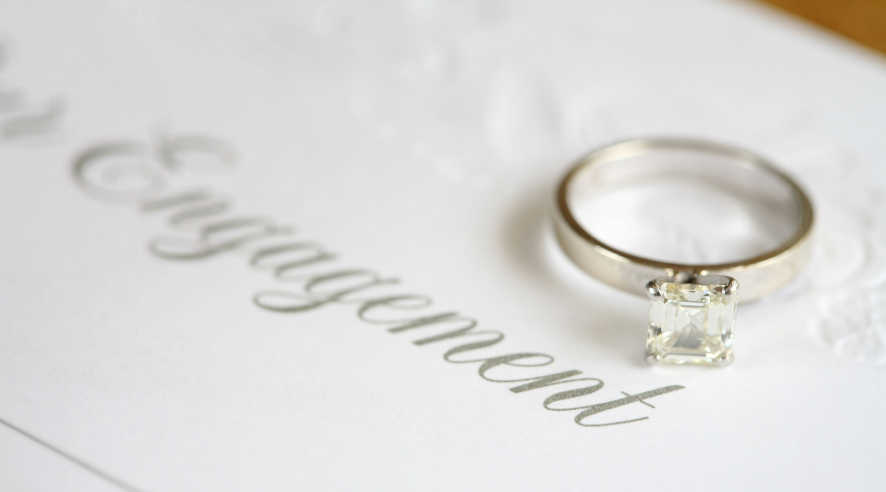The Ultimate Guide to Choosing the Perfect Engagement Ring: Everything You Need to Know
- 21 November 2022

An engagement ring is a symbol of love, commitment, and the promise of a future together. It is the beginning of a lifelong journey that starts with a proposal and ends with a wedding. But choosing the perfect engagement ring can be a daunting task. With so many options available, it's hard to know where to start. That's why we've put together this ultimate guide to help you navigate the world of engagement rings.
Understanding the 4 C's of Diamonds
The first thing to consider when choosing an engagement ring is the diamond. Diamonds are graded based on four criteria: cut, clarity, color, and carat weight. The cut refers to how well the diamond has been cut and shaped, which determines its overall brilliance and sparkle. The clarity refers to the amount of imperfections, or inclusions, in the diamond. The color refers to the presence or absence of color in the diamond, with white diamonds being the most valuable. The carat weight refers to the size of the diamond, with larger diamonds being more expensive. Understanding these four criteria will help you choose a diamond that is both beautiful and within your budget.
When it comes to diamonds, the four Cs – cut, clarity, color, and carat weight – are the most important factors to consider. A well-cut diamond will sparkle and reflect light in a way that a poorly cut one cannot. A diamond's clarity is determined by the number of inclusions or flaws it has, with a higher clarity grade indicating fewer flaws. Diamond color is rated on a scale from D (colorless) to Z (light yellow or brown), with colorless diamonds being the most valuable. Finally, carat weight refers to the size of the diamond, with larger diamonds being more expensive.
It's important to consider all four of these factors when choosing a diamond, as they all work together to determine its overall value and beauty. A well-cut diamond can make up for a slightly lower clarity or color grade, and a smaller diamond with excellent cut and clarity can still look stunning. Understanding the 4 Cs can help you make an informed decision when choosing a diamond that fits your budget and style.
Choosing the Right Setting
Once you've chosen a diamond, the next step is to choose a setting. The setting is the part of the ring that holds the diamond in place. There are many different types of settings to choose from, including prong, bezel, pave, and channel. Each setting has its own unique look and feel, so it's important to choose one that complements the diamond and reflects your personal style.
The setting of an engagement ring is the part that holds the diamond in place. There are many different types of settings to choose from, each with its own benefits and drawbacks. The most popular setting is the prong setting, which uses metal prongs to hold the diamond in place. This allows for maximum light to enter the diamond, making it sparkle more.
Another popular setting is the bezel setting, where the diamond is surrounded by a metal rim that holds it in place. This type of setting offers excellent protection for the diamond and is ideal for those with an active lifestyle.
Pave settings feature small diamonds or other stones set closely together to create a sparkling surface. Channel settings hold the diamonds in a channel of metal and are often used for wedding bands.
When choosing a setting, it's important to consider the size and shape of the diamond, as well as your personal style. A more delicate diamond might look best in a prong setting, while a larger diamond might require a more substantial setting to hold it securely.
Selecting the Metal
The metal of the engagement ring is another important consideration. The most popular metals for engagement rings are gold, platinum, and white gold. Each metal has its own unique properties and benefits. Gold is a classic choice and comes in a variety of colors, including yellow, white, and rose. Platinum is a durable and hypoallergenic metal that is perfect for those with sensitive skin. White gold is a modern and stylish choice that complements diamonds beautifully.
The metal of an engagement ring can affect its durability, color, and cost. The most popular metals for engagement rings are gold, platinum, and white gold. Gold comes in a variety of colors, including yellow, white, and rose, and is a traditional and classic choice. It's also a relatively soft metal, which means it can scratch and wear down over time.
Platinum is a durable and hypoallergenic metal that is perfect for those with sensitive skin. It's also the most expensive metal option, but it won't wear down over time like gold.
White gold is a modern and stylish choice that has a similar look to platinum, but at a lower price point. It's also more durable than yellow gold, but can still scratch and wear down over time.
Customizing Your Ring
If you want to make your engagement ring truly unique, consider customizing it. There are many ways to customize an engagement ring, including adding accent stones, engraving a personal message, or choosing a non-traditional diamond shape. Customizing your ring will make it even more special and meaningful.
Customizing your engagement ring can make it truly unique and special. There are many ways to customize a ring, from adding accent stones to engraving a personal message. You can also choose a non-traditional diamond shape, such as a pear or marquise, to make your ring stand out.
Conclusion
Choosing an engagement ring is a big decision, but it doesn't have to be overwhelming. By understanding the 4 C's of diamonds, choosing the right setting and metal, and customizing your ring, you can create a ring that is perfect for you and your partner. Remember, an engagement ring is a symbol of love and commitment, and it should reflect your unique relationship.




